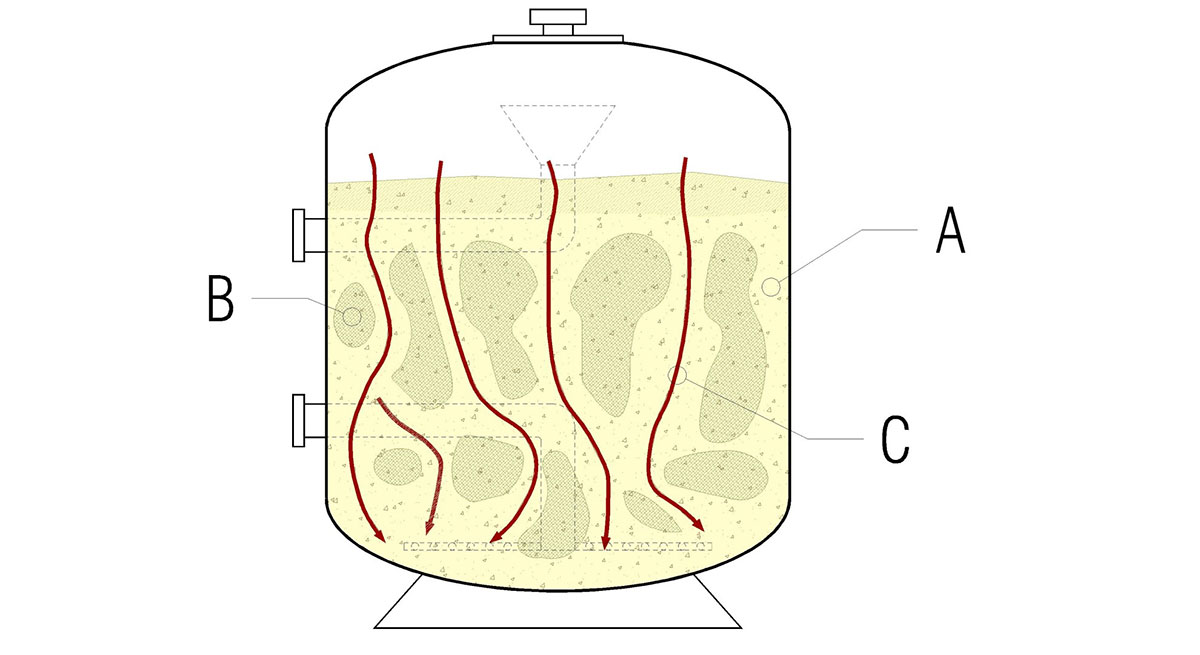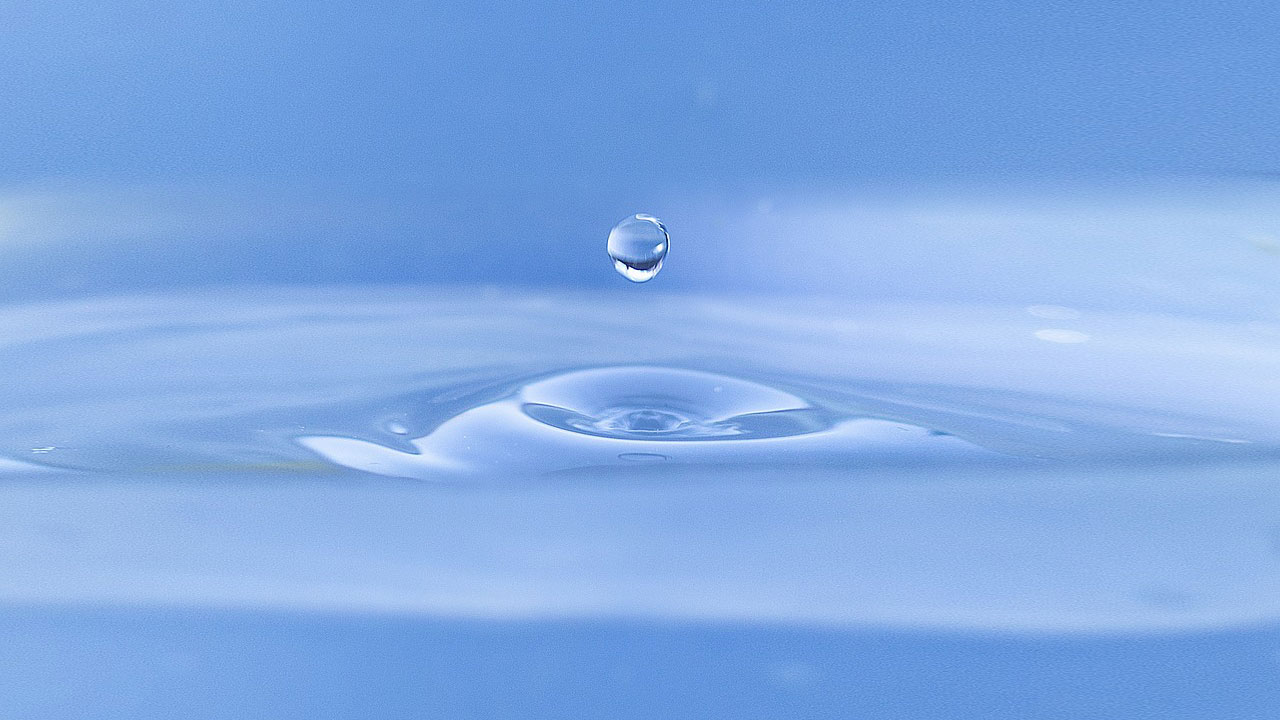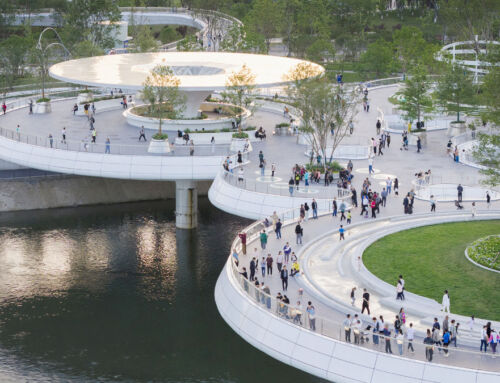Micro-organisms and bacteria present in water are rapidly destroyed in a matter of seconds when they come into contact with free chlorine. However, when these bacteria and micro-organisms adhere to a surface, they are able to develop an alginate gel (an organic polymer), which insulates them from chlorine and prevents their destruction, at least at the usual concentrations of this chemical in swimming pools (1 or 2 ppm). This gel acts as a shield and allows the bacteria to reproduce freely and rapidly, thus colonising the surface to which they have adhered. This forms the biofilm, a slippery, yellowish-green biofilm. Once formed, the biofilm is colonised by other species of pathogens, such as algae or fungi.
Biofilm development in swimming pools
Biofilm forms and develops in the following stages:
–Adhesion (1): given suitable conditions, microorganisms adhere to the surface.
–Colonisation (2): the attached bacteria begin to colonise the surface.
–Formation (3): the micro-organisms begin to form an extracellular matrix.
–Growth (4): channels form within the matrix, allowing nutrient transport and film development.
–Dispersion (5): fragments of the biofilm break off, adhere to other surfaces and facilitate its expansion.

Figure 1. Stages of biofilm development

Figure 1. Stages of biofilm development
In the particular case of swimming pools, biofilm develops on the walls, on the bottom, in pipes and also in the filter medium, which has the largest surface area in contact with the water in a swimming pool.
Factors of biofilm proliferation in a swimming pool
A number of factors influence the development of biofilm in swimming pools:
-The presence of organic matter in the water, in other words, nutrients for the bacteria.
–Surfaces or substrates that are favourable for bacterial growth.
–Poor or inadequate chemical dosing.
–Stagnant or poorly circulating water, as its movement decreases biological growth.
-The number of bathers. The greater the number of bathers, the greater the amount of organic matter introduced into the water of a swimming pool.
-The temperature of the pool water. The higher the water temperature, the greater the biological growth. Special care must be taken in spa and hydrotherapy pools, where water temperatures are usually higher.
Biofilm in filter media
–Silica sand: the most commonly used filter medium in conventional swimming pool filters is silica sand (A in the image). It is a material with a suitable particle size for particle retention. However, it has porosity and surface roughness, so that, despite periodic backwashing, organic residues and grease can accumulate on its surfaces and crevices. Bacteria, in fact, adhere to the surface of the sand grains and feed on the organic matter that has been retained on them, so that they reproduce and develop the biofilm. This biofilm cakes the sand, agglutinates certain areas (B in the image), and creates preferential paths (C) in the filter medium. From this point on, the filter no longer carries out its mission properly and the filter medium will need to be replaced.

Figure 2. Effects of biofilm on sand filter media

Figure 2. Effects of biofilm on sand filter media
–Recycled glass: this material performs considerably better as a filter medium against biofilm formation. First of all, glass has no porous surfaces or surface crevices, and its texture is not rough, so that organic particles that serve as food for bacteria do not attach themselves to it. In addition, micro-organisms also find it more difficult to attach themselves to glass due to its smooth and slippery surface.
Biofilm prevention measures
To prevent the appearance of biofilm in swimming pools, it is advisable to:
-Maintain the water at an adequate free chlorine level, which helps to prevent the growth of bacteria and pathogenic micro-organisms in the water.
-Maintain the pool water at a suitable pH, between 7.2 and 7.4, which helps the chlorine to be more effective.
-Keep pool filtration running 24 hours a day.
-Control the combined chlorine, and keep it low, to avoid high concentrations of chloramines and organic matter. It is advisable to periodically add water from the mains to reduce the concentration of chloramines.
–Clean the walls and bottom of the pool and the tank regularly.
-Keep the filter media clean, with periodic backwashing, and replace it when necessary, according to the manufacturer’s recommendations.
– Prevent organic matter in the pool basin interior and the tank.
-Implement flocculation treatments, which agglutinate the smallest particles and organisms present in pool water. In this way, the filter traps them and prevents them from remaining in suspension.
By Luis Llor, Senior Hydraulic Engineer in the Architecture Department of Amusement Logic






